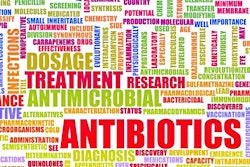
Continuing from 2022 into 2023, much of the United States pet food industry’s sales growth has come from rising prices on a relatively steady retail volume of dog, cat and other pet foods. Cascadia Capital’s report “Pet Industry Overview: Spring 2023” explored this economic phenomenon. The U.S. pet food industry has been growing in the years since the pandemic spike, but the dynamic has changed. Market researchers with the American Pet Products Association (10.8%) and Packaged Facts (9.5%) recorded growth across all platforms for pet products in 2022. However, Cascadia’s analysts wrote that “all signs point to decelerating fundamentals as year-over-year growth declined off the COVID-19 apex.” A growth decline may not be a serious concern in isolation, but the fundamental reason for sales growth may be.
I want my free, daily news update from Petfood Industry.
“However, industry growth in 2022 is almost universally attributable to price with little-to-no benefit from volume, a fact pattern that has continued in 2023,” Cascadia analysts wrote.
APPA statistics reflect declining numbers of pet-owning households. Seventy percent of U.S. households included dogs, cats and other pets in 2021, or 90.5 million households. In 2022, that figure dropped four percent to 89.6 million.
“We believe this validates our ownership thesis – that while acquisition was elevated through COVID-19, the lapping of subsidies and renter protection caused ownership retrenchment from older generations and more economically sensitive demographics,” they wrote. “Sources are projecting meaningfully slower growth for the industry in 2023, albeit robust relative to other consumer segments.”
Pet food inflation
Inflation increased pet food prices in 2023 and at a faster rate than broader consumer price index, Cascadia reported. Costs leveled off somewhat for pet food producers this spring, as producer price indexes plateaued for meat processors, renderers, resin and transportation sectors. As prices stabilize, pet food manufacturers may find economic relief and savings.
“It will be critical for manufacturers and marketers to pass along a portion of any cost savings realized in order to prevent the industry from continuing the shift to focusing on the super-premium and high-income consumer, leaving behind more value-oriented demographics,” Cascadia wrote.
About Cascadia Capital
Cascadia Capital is an investment bank and advisory firm based in Seattle, Washington, USA. Cascadia provides financial services to middle-market companies, such as mergers and acquisitions, capital raising and strategic advisory. Cascadia Capital focuses on other sectors along with pet food, including technology, consumer products, healthcare and industrials. The firm was founded in 1999 by Michael Butler and Jim McIlwain and initially focused on the Pacific Northwest. Over time, Cascadia Capital expanded its regional presence. Cascadia Capital's services include mergers and acquisitions advisory. The firm assists in valuation, deal structuring, due diligence, and negotiation. Cascadia Capital follows an index of publicly traded pet industry stocks, including Nestlé, J.M Smucker, Chewy, FreshPet, Central Garden and Pet Company, Neogen, Virbac and Zoetis, along with other pet care, veterinary and insurance companies.


















